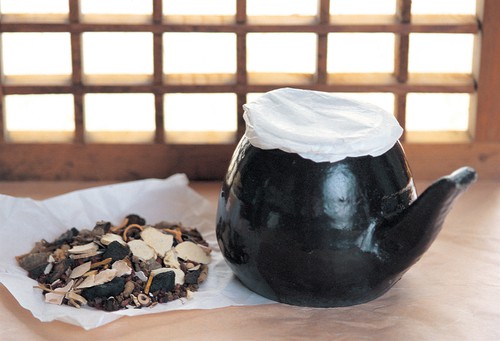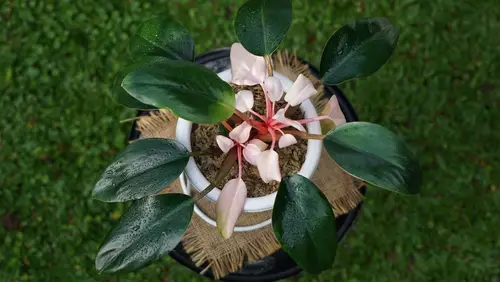A plant that brightens the look of your room or office space without needing special care? Yes, that’s the Red Princess Philodendron for you. This beautiful hybrid plant will make any corner stands out by its attractive green leaves with a red underside and a red stem.
Red Princess Philodendron has large leaves with a glossy surface that gives a tropical vibe to your place. Whether you’re an experienced plant parent or a beginner, the Red Princess Philodendron is a great addition to your collection, as it’s not only beautiful but also low-maintenance and easy to care for.
Keep reading to know everything about this plant so that even you can make this beauty a member of your home. Let’s take a look!
See similar posts:
- Philodendron Genevievianum Plant, Grow & Care Guide 2023
- Philodendron Grazielae Plant, Grow & Care Guide 2023
- Pink Flecked Syngonium Plant, Grow & Care Guide 2023
What is a Red Princess Philodendron?

The Red Princess Philodendron is one of the 450 known varieties of Philodendron, such as the Thai Sunrise Philodendron. It is a beautiful relatively new hybrid indoor plant. The red princess philodendron has got its name because of its colorful foliage.
The underside of this plant’s leaves has a red color with a red stem and unique eye-catching leaves that can be a great addition to your living room or urban garden.
Red Princess Philodendron is an evergreen tropical plant that grows well in partial shade and moderate temperature. It is a fast-growing climber which also blooms if planted outdoors. This plant rarely blooms if planted in confined spaces.
You can pot them with a moss pole to climbing support or you can simply plant them in a hanging basket.
Red Princess Philodendron plant is poisonous to humans and animals. It can cause diarrhea, vomiting, or discomfort if consumed. Other than toxicity, the sap of this plant can also cause irritation if it comes in contact with skin.
Origin and Classification
Red Princess Philodendron is a hybrid plant that belongs to the Araceae family. It is typically grown as an indoor plant. It grows in a tropical climate in partial shade at a moderate temperature.
A philodendron is native to the West Indies and other parts of America with a warm climate. Since the red princess philodendron is a hybrid plant, information about its scientific classification is often difficult to find.
Benefits of Red Princess Philodendron
The Red Princess Philodendron not only enhances the visual appeal of your living space but also offers several benefits. This plant is known for its air-purifying properties, as it helps remove toxins from the surrounding environment, promoting cleaner and healthier air.
Its large glossy leaves contribute to higher oxygen production, making it a great addition to any indoor space. Furthermore, the Red Princess Philodendron can create a calming and soothing atmosphere, contributing to stress reduction and improved mental well-being.
Studies have shown that being around plants can increase productivity and concentration, making this plant an ideal choice for your office or workspace.
Red Princess Philodendron and Feng Shui
Incorporating the Red Princess Philodendron into your home or office space can bring positive energy and enhance the flow of chi according to the principles of Feng Shui. This plant is associated with the Wood element, symbolizing growth, vitality, and harmony.
Placing the Red Princess Philodendron in the eastern or southeastern part of your space is believed to attract wealth and abundance. Its vibrant green leaves and red stems represent vitality and passion, adding a vibrant touch to the surroundings.
Additionally, the Red Princess Philodendron’s climbing nature can be utilized to redirect energy and create balance in a room. By training its vines to grow upward, you can encourage the flow of energy in specific directions or areas.
Remember to keep the plant well-maintained and healthy, as withered or dying foliage can disrupt the positive energy flow. Whether you fully embrace Feng Shui principles or simply appreciate the aesthetic qualities of the Red Princess Philodendron, this plant can be a beautiful and meaningful addition to your space.
Red Princess Philodendron in Traditional Medicine and Folklore

Throughout history, various plants have been utilized in traditional medicine and folklore, and the Red Princess Philodendron is no exception.
While it is important to note that self-medication or relying solely on plant remedies is not recommended without consulting a medical professional, it is interesting to explore the historical uses and beliefs associated with this plant.
In some cultures, the Red Princess Philodendron has been used as a topical treatment for skin ailments such as rashes, burns, and insect bites. The sap or juice extracted from the plant was believed to possess soothing and healing properties. However, it is crucial to exercise caution when handling the plant, as its sap can cause irritation in some individuals.
Additionally, some cultures believed that having a Red Princess Philodendron in the home could bring good luck, prosperity, and protection against negative energies. While these traditional uses and beliefs may not have scientific evidence to support them, they add to the rich cultural significance and folklore surrounding this plant.
Features of Red Princess Philodendron
Red Princess Philodendron is a full foliage plant with shiny big leaves that are slightly arched. This evergreen vine grows rapidly and can bloom any time of the year. However, it rarely produces flowers when planted indoors.
This hybrid plant has got its name for having red underside leaves and a red stem. The unique leaves make it stands out in any corner of the place making it a perfect fit for indoors.
1. Leaves

Leaves of Red Princess Philodendron are large with a glossy appearance. The underside of these leaves and stems is red in color. The flower of this plant grows in red color at any time of the year if planted outdoor in an open space.
The leaves of this plant are vine-like and hence can climb up a moss as support or cascade down the hanging basket.
2. Flowers
The flower of the Red Princess Philodendron is deep red in color. It rarely flowers indoors but if it does tiny white blossoms are enclosed by a spathe, this enclosed tiny blossoms into red berry-like fruit. The flower of the red princess philodendron is similar to other hybrid philodendron flowers.
3. Height
Red Princess Philodendron is an evergreen climber which grows really fast if proper care is provided. This vine can grow up to 3-9m (10-12 feet) tall. While the red stem of this plant can grow up to 40cm(16 inches).
4. Evergreen
Similar to other varieties of Philodendron, the Red Princess Philodendron is also a perennial vine. Since this is a tropical plant, it requires a moderate temperature to grow well. Even though it hardly blooms indoors but its unique full foliage will make itself a show stopper of a room.
Basic care of Red Princess Philodendron
Red princess philodendron can be a great choice for someone who is new to gardening as they don’t require much care. It is an evergreen vine so you don’t have to worry about any special care in a particular season.
Despite being beginner-friendly, there is some basic care you need to provide red princess philodendron so that it grows to its fullest.
1. Sunlight requirement
Red princess philodendron grows well in bright indirect sunlight. Keep the pot or plant them in the garden away from the area where it gets direct sunlight.
Placing them in a partial shade will be very beneficial for their growth. Red princess philodendron is a tropical plant and hence loves warmer temperatures around 66°F to 55°F.
Leaving your red princess in direct sunlight will burn their leaves and turn them brown. Keeping it in such an area will kill your plant in the longer run. This plant can be a great option for people who have north facing balcony or garden as they don’t receive any direct sunlight throughout the day.
2. Water requirement
Red princess philodendron is a tropical plant which means it loves moist soil and a moist environment. This plant requires moist soil but make sure never to overwater it. Over watering makes the soil of the plant soggy and root rot, which is eventually bad for your plant health. It’s a drought-resistant plant, but forgetting to water for a long duration can kill your plant.
To increase the humidity level of your plant you can spray or wipe its leaves with a damp cloth.
It is better to make a habit of daily watering so that your plant flourishes at its best. In the growing season, water it regularly to avoid any stunted growth. In the late fall to winter months, you can limit watering as the weather is already moist during the season.
3. Soil Requirement

Red Princess Philodendron requires moist soil to grow well. Being a moisture-loving plant, it does not thrive well in clay-type soil as it does not retain moisture.
The best kind of soil for any Philodendron is a well-drained, lightweight, nutritious full, and airy soil mix. The soil mix of Red Princess Philodendron should be rich in organic matter.
4. Humidity
Red Princess Philodendron is a low-maintenance plant that doesn’t require much of your attention. However, it still needs some humidity to thrive well. Keep the leaves of the plant moist by spraying water on them but do not soak them wet.
Dry weather can be very harsh for them and hence you need to mist them multiple times a week to maintain the humidity level. You can also place a humidifier in the area where you have potted your red princess.
Similar to its native tropical environment, its soil needs a slightly alkaline PH between 5-6. It can also be grown as an epiphytic plant.
5. Fertilizing
Red Princess Philodendron requires nutrition-rich soil for proper growth. Without adding any fertilizer your plant may survive, but will not flourish as it should. Providing a well-balanced fertilizer will ensure the healthy growth of your plant. You can also grow your red princess in a soil-less potting mix by mixing peat moss, perlite, and orchid bark.
6. Drought and Disease Resistance
Red Princess Philodendrons are relatively disease-resistant but sometimes insects and other fungal infections can affect this plant.
Dasheen mosaic virus is a fungal infection that affects these plants and causes pale green feathering symptoms. Insects that harm your red princess philodendron are mealy bugs, spider mites, and scale insects.
7. Potting and Re-potting
The best time to plant red princess philodendron is spring when the temperature is around 65F. You can also pot them in early summer when the temperature is not too hot and ideal for philodendron. Repotting this plant with proper soil mix will keep them from rotting and promotes vigorous growth.
8. Pruning
Red Princess Philodendron does not require regular pruning. You just have to check once a few times a week for any discolored leaves, dead stems, or dead aerial roots and cut them to maintain a clean appearance.
How to propagate?

Once you learn to propagate Red Princess Philodendron, then it will never go out of your stock. You can also gift this beauty to your friends and family after propagating. The ideal time for propagating this beauty is during early spring. You can propagate this plant via air layering.
Follow the below steps to propagate your Red Princess Philodendron.
Step 1
Soak the moss in the water and squeeze the excess water from it
Step 2
Select a healthy branch neither too young nor too old. Make a slant cut exposing the inner tissue about halfway or two-thirds of the branch.
Step 3
Place a small piece of plastic to avoid the cut closing up to the branch again
Step 4
Now Place a damp moss around the cut, do not press it tightly and it should feel like a sponge
Step 5
Cover the moss with plastic and wrap it with a string, this will hold the moss.
Step 6
Make a small incision on the plastic to allow aeration
Step 7
After some weeks, the root will start to form around the moss (this is why it is recommended to take a transparent plastic so that you notice the growth of roots)
Step 8
Once the moss has developed roots, you can cut the branch carefully. Prepare a good soil mix and place the rooted moss. For the initial few weeks water the plant carefully and keep it moist but never too wet.
Propagation Methods for Red Princess Philodendron
While air layering is the primary propagation method for the Red Princess Philodendron, there are other techniques you can use to propagate this plant. One such method is stem cuttings.
To propagate through stem cuttings, select a healthy stem with several nodes and make a clean cut just below a node. Remove the lower leaves and place the cutting in a jar of water or a well-draining potting mix. Keep the cutting in a warm and humid environment, and roots should start to develop within a few weeks.
Another propagation method is division, which involves separating the plant into smaller sections, each with its own roots and stems. This method works well when the plant has outgrown its current pot or if you want to share it with others.
Gently separate the root ball into smaller sections, ensuring each division has enough roots and foliage to support its growth. Plant each division in a suitable potting mix and provide appropriate care to encourage root establishment.
Common Problem Caring for Red Princess Philodendron
The common issue which plant parent face of Red Princess Philodendron is when it is attacked by insect pests like mealybugs, spider mites, and other scale insects. Taking care of this plant in harsh weather is also one of the challenges.
1. Insects
Insects like mealybugs damage the plant by sucking the juice from their host plants. This insect forms a coating of white powdery wax. If this is controlled on time, it can cause the leaves to turn yellow and drop prematurely and in the worst conditions, it can develop mold fungus.
You can prevent such problems by spraying your plant with insecticidal soap mixed with neem oil once a month or as mentioned on the package.
2. Over watering
Sometimes we love and care for our plants so much that we water them more than they required. When you overwater your plants, the leaves start to turn yellow and eventually start falling off. A beginner will see this as a sign of a lack of water and often tend to water them even more.
3. Root rot

Root rot is caused by fungi name which attack rot and prevent them from taking nutrients and moisture from the soil. Once it starts affecting it badly, it becomes very difficult for a plant to recover from this problem. When your plant is affected by root rot, the best thing to do is prevent it from spreading to other plants.
4. Brown Tips
Red Princess Philodendrons are tropical plants and do not prefer dry weather. Lack of humidity can cause the tips of the leaves to turn brown, which does not look good on your plant. This can also be the cause of too much sunlight.
We mentioned several times that this plant (in fact most of the varieties of philodendron) enjoys partial shade and bright indirect sunlight. Keeping them in full sun will result in irreversible brown tips on the leaves. Lack of water or fertilizer toxicity can also be one of the reasons for brown tips.
Outro
Red Princess Philodendron is a perennial vine that will give an aesthetic touch to any space. Keep it in bright indirect sunlight so that it gets enough required light. Water your plant regularly but never over-water, always touch the top of the soil before watering. Fertilize it during the growing season and check frequently for any pest attacks or diseases.
Frequently Asked Questions
Why is philodendron pink princess so rare?
The reason behind Pink Princess Philodendron being so rare is that it is grown in a lab from tissue culture. This plant has very beautiful foliage with bright pink streaks that are not so common to find. It has heart-shaped leaves with bright pink pigmentation and seems like an artwork of nature.
How do you take care of red philodendron?
Red Philodendron is a hybrid variety of Philodendrons. It is a tropical plant and hence loves being in moist conditions. During winters, protect it from harsh cold weather whereas in dry periods, keep it moist by spraying water on it. Keep it in bright indirect sunlight as it thrives well in such conditions.
What is the rarest Philodendron?
Spiritus Sancti is the rarest of all Philodendrons. Its name is inspired by the place it comes from, Espirito Santo, a Brazilian state. This plant is so endangered, that it is kept under supervision and has security around it. It is also said that only six of these plants are remaining.
Despite being so rare, it is very easy to care. On average, the leaves of the Spiritus Sancti plant are 2 feet long. The price of this plant goes as high as $12,000.

Hey, I’m Lisa and I’ve been an avid gardener for over 30 years. I love writing, talking and living in the garden! Feel free to connect with me on my socials below

